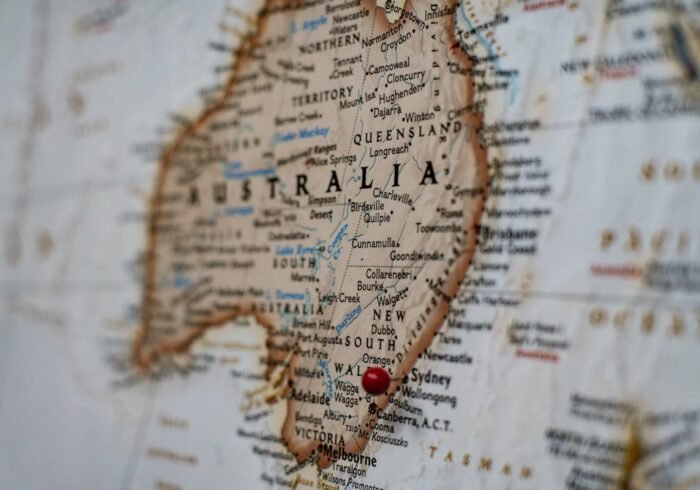Deforestation: A Worldwide Problem One of the most urgent environmental problems of the twenty-first century is the widespread removal of trees from forested areas, or deforestation. Numerous factors, such as the growth of agriculture, urbanization, & logging, are responsible for this phenomenon. When forests are cut down to create space for infrastructure, crops, and livestock, the delicate ecosystem balance is upset, which has a series of detrimental effects.
Key Takeaways
- Deforestation is the clearing of trees and forests on a large scale, often for agricultural or commercial purposes.
- Deforestation leads to loss of biodiversity, soil erosion, and contributes to climate change through the release of carbon dioxide.
- Sustainable solutions for preventing deforestation include promoting sustainable logging practices and encouraging agroforestry and reforestation.
- Implementing legal protections for forests and supporting indigenous and local communities are crucial in preventing deforestation.
- Consumers play a key role in preventing deforestation by supporting sustainable and responsibly sourced products.
The significant effects of deforestation on biodiversity, climate change, and the livelihoods of millions of people who rely on forests for their survival highlight how urgent it is to address this issue. There are concerning statistics about deforestation. The Food and Agriculture Organization (FAO) estimates that every year, about 10 million hectares of forest—the area of Iceland—are lost. The abundant biodiversity that forests support is in danger due to this unrelenting trend, which also greatly increases greenhouse gas emissions.
Global warming is made worse by the release of carbon stored in trees’ biomass into the atmosphere during their removal and burning. To effectively combat this crisis and advance sustainable practices, it is imperative to comprehend the complex nature of deforestation. Deforestation has wide-ranging and complex environmental effects.
The loss of habitat for innumerable species, which results in a reduction in biodiversity, is among the most obvious consequences. Animal populations are seriously threatened by the destruction of forests, which are home to about 80% of all terrestrial species on Earth. Many species face extinction as a result of habitat fragmentation or removal, upsetting ecosystems and reducing the biological diversity of the planet. Deforestation also contributes significantly to climate change. By removing carbon dioxide from the atmosphere and storing it in their biomass, forests serve as carbon sinks.
| Metrics | Data |
|---|---|
| Deforestation Rate | 10 million hectares per year |
| Forest Cover | 31% of total land area |
| Sustainable Logging | 20% of total timber production |
| Protected Areas | 15% of total land area |
| Community Forest Management | 30% of total forest area |
The greenhouse effect is exacerbated when trees are cut down or burned because the stored carbon is released back into the atmosphere. According to the Intergovernmental Panel on Climate Change (IPCC), deforestation is responsible for almost 10% of greenhouse gas emissions worldwide. This increases the frequency of extreme weather events like droughts and floods, which endanger ecological and human communities in addition to hastening climate change.
Deforestation must be addressed using a multipronged strategy that includes community involvement, policy changes, & sustainable land management techniques. The advancement of sustainable farming practices, which reduce land clearing while increasing productivity, is one practical remedy. Farmers can boost yields without using deforestation by implementing techniques like permaculture and agroecology.
Agricultural systems can become less dependent on chemical inputs and more resilient by employing crop rotation, intercropping, and organic farming practices. Afforestation and reforestation projects are essential in the fight against deforestation, along with sustainable agriculture. Planting trees in previously unforested areas is known as afforestation, whereas reforestation entails replanting trees in deforested areas. These programs improve carbon sequestration efforts in addition to restoring ecosystems. Globally, governments and organizations are investing in initiatives to restore degraded landscapes as they become more aware of the significance of these tactics.
Logging methods that are sustainable are crucial for striking a balance between environmental preservation and economic demands. Conventional logging techniques frequently result in substantial biodiversity loss and forest degradation. But the main focus of sustainable forestry methods is selective logging, which entails picking only the right trees to cut down while maintaining the ecosystem’s general health. With this approach, timber production can continue without endangering the forest’s integrity.
Sustainable logging practices are outlined in certification programs like the Forest Stewardship Council (FSC). Timber products from forests that are responsibly managed & place a high priority on social justice & ecological health are guaranteed by these certifications. Customers can encourage businesses to implement eco-friendly practices and support sustainable forestry initiatives by supporting certified wood products in the marketplace.
An inventive method called agroforestry incorporates trees into agricultural landscapes and offers many advantages to both farmers and the environment. Farmers can improve water retention, increase soil fertility, & create microclimates that shield crops from harsh weather by growing crops alongside trees. By creating habitats for a variety of species, this practice not only boosts agricultural productivity but also aids in the preservation of biodiversity. Reforestation initiatives are equally important for reducing the consequences of deforestation.
Native tree plantings improve carbon sequestration capabilities and aid in ecosystem restoration in deforested areas. Through ecotourism initiatives or sustainable timber production, community-based reforestation projects offer economic opportunities while empowering local populations to actively participate in environmental restoration. These initiatives can help communities fight deforestation in the long run by encouraging a sense of ownership. In order to prevent unsustainable exploitation of forests, legal frameworks are essential. Laws that shield wooded areas from illicit logging and land conversion for urban or agricultural development must be passed and upheld by governments. It is also crucial to strengthen the land tenure rights of local communities and indigenous peoples, since they frequently look after their forests and have important traditional knowledge about sustainable land management.
The Paris Agreement & other international agreements highlight how crucial forest protection is to the fight against climate change. While addressing the causes of deforestation, nations are urged to create national strategies that give priority to forest conservation & restoration. Governments can develop a unified strategy for forest protection that benefits people and the environment by coordinating national policies with international commitments. Because of their strong ties to their ancestral lands, local communities & indigenous peoples are essential to forest conservation efforts.
In order to manage forests sustainably, these communities frequently possess traditional ecological knowledge that has been passed down through the generations. Recognizing their contributions and defending their rights are crucial components of successful conservation plans. Forest management techniques may become more efficient if indigenous communities are empowered through the acknowledgment of their land rights and capacity-building programs. Local communities are more inclined to put sustainability ahead of immediate financial gain when they participate in decisions about resource management and land use. In the end, cooperative strategies that uphold indigenous rights can promote stewardship of natural resources, which benefits ecosystems and communities alike.
Customers have a big say in market trends and how much demand there is for sustainable goods. Individuals can support initiatives to stop deforestation by choosing products with knowledge. You can lessen the strain on forests by choosing products that are sourced sustainably, such as certified wood products or palm oil from ethical growers. Also, cultivating a culture of sustainability requires increasing awareness of how consumer behavior contributes to deforestation.
Campaigns for education can help customers understand the value of backing businesses that place a high priority on ethical sourcing and environmental responsibility. Customers can actively contribute to a more sustainable future for forests around the world by banding together to demand change from governments and corporations alike. In conclusion, deforestation is a serious threat to human livelihoods, climate stability, and global ecosystems. Effective mitigation of its effects is achievable, though, by combining sustainable practices, legal safeguards, community involvement, and consumer awareness. Society can endeavor to preserve forests for future generations while tackling urgent environmental issues by giving priority to sustainable solutions like agroforestry, reforestation, & ethical logging practices.
A world where forests flourish alongside human development—a world where nature’s priceless resources are respected and safeguarded for all living beings—requires the combined efforts of governments, organizations, communities, and individuals.



